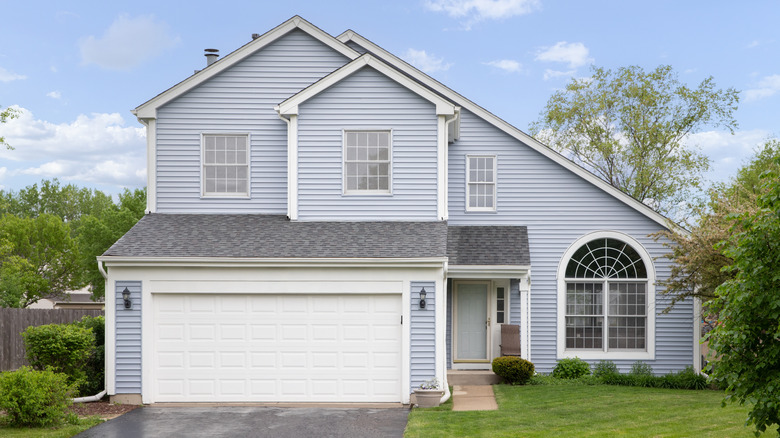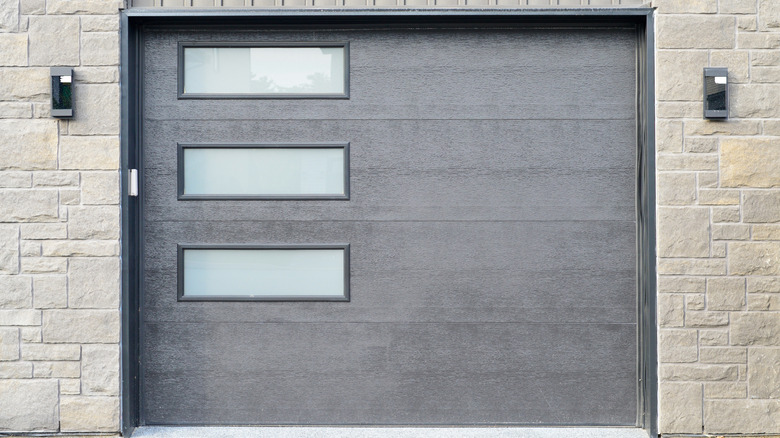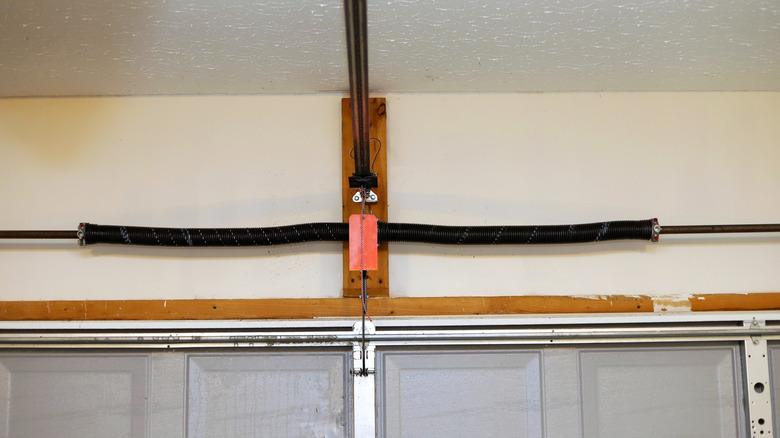What Is A Sectional Garage Door And Is It The Right Choice For You?
Has your garage door seen better days? A garage door might be hurting your home's resale value if it's damaged or outdated. If you decide to install a replacement, you'll have to consider your options — one of will probably be a sectional garage door. Whether or not you've heard the official term, you've most definitely seen this type of door in your neighborhood. A sectional garage door features multiple long, horizontal panels connected with hinges that allow the door to bend as it opens. Sectional garage doors are secure, readily available, and cost-effective. They're also ideal in tight spaces and areas with extreme weather, but are they the right choice for you? The doors come with certain drawbacks, including the potential for damage. Likewise, the style may not be the best fit for all homes.
Sectional garage doors run on tracks that attach to the sides of the openings before curving to run parallel to the floor and ceiling. The hinges where the door panels connect feature rollers that move along the track when you open or close the door. When it's completely open, the door is suspended horizontally beneath the garage ceiling; it remains there until you close it. Opening and closing is automated, with a garage door opener doing the heavy lifting.
Single-panel or tilt-up garage doors offer an alternative to sectional doors. Instead of comprising multiple sections, this type of door consists of a single panel that pivots up or down on a set of hinges. It lends a vintage aesthetic to your home, and it has fewer moving parts than the sectional style, which often means you need fewer repairs.
Sectional garage doors are secure and widely available
Because sectional garage doors are popular, they're easy to find with a wide range of design options. Pricing for sectional doors usually ranges from $500 to $1,800. Standard doors at the low end of the price range are relatively plain and simple, but you can increase your budget if you prefer unique designs in a variety of colors and finishes. For a modern home, you might choose a sectional door with full-view glass panels from top to bottom. If you prefer a classic look, you might opt for a wood door with carved detailing.
Sectional garage doors are typically more durable than their single-panel counterparts in extreme weather. Plus, sectional doors are usually better insulated. Not only can you buy well-insulated doors, but you can also use garage door insulation kits. Tight rubber seals around the door offer additional protection against hot and cold temperatures and are considered better for security. In contrast, single-panel doors typically have gaps around the edges, and these leave the garage more vulnerable to the elements and intruders.
When space is tight, a sectional garage door works well. The door moves straight up and curves at the ceiling, so you don't need clearance in front of the garage if you have a short driveway. With a tilt-out door, you need about 4 feet of space to accommodate the door's vertical swinging path. Sectional doors also leave ample space inside the garage for storage.
Disadvantages of sectional garage doors (and alternatives to consider)
There are disadvantages to installing sectional garage doors, and these are important to consider. Thanks to the large number of components, sectional garage doors often need a wide range of repairs. For example, torsion springs are large, thick coils that are positioned above the opening and help lift the heavy door. Over time, these springs can wear out and break, causing the door to fall or become crooked. The tracks can become misaligned, which could make the door uneven, cause excessive noise during operation, or even keep the door from opening. Moving parts may become rusty, loose, or worn, preventing the door from opening and closing properly. All these faults could render the door useless until you pay for pricy repairs.
The drawbacks of sectional doors might make you lean toward an alternative. Tilt-out, single-panel doors are an option for residential garages. You might choose a tilt-out door instead of a sectional one if you prefer a vintage look. But tilt-out doors are also ideal if you're looking for minimal maintenance, fewer repairs, and a longer service life since they have fewer moving parts than sectional doors. A tilting door is also easy to open and close because of its lightweight design and the balanced location of its springs.


